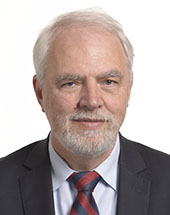New Urban Mobility Framework: What’s new for active and micro-mobility?

On March 7th 2023, the European Parliament’s Urban Intergroup and Micro-Mobility for Europe jointly organized a debate about active and micro-mobility in the context of the New Urban Mobility Framework. The event aimed to discuss the challenges and opportunities of these alternative modes of transportation in urban areas and their potential to improve the sustainability and efficiency of urban mobility.
The debate brought together various stakeholders, including Members of the European Parliament (MEPs), representatives of the micro-mobility industry, urban planners, and experts in sustainable mobility. Participants highlighted the importance of active and micro-mobility in achieving the goals of the New Urban Mobility Framework, which seeks to promote sustainable, low-emission, and efficient mobility in urban areas.
One of the main topics discussed during the debate was the need to provide dedicated infrastructure for active and micro-mobility, such as cycling lanes and safe spaces for pedestrians. Participants also emphasized the importance of harmonizing technical standards for personal mobility devices to ensure safety and prevent high-speed accidents.
Members of the European Parliament: Andrey Novakov, Andreas Schieder, Ciaran Cuffe, and Marcos Ros Sempere spoke at the event, highlighting the role of public transport as the backbone of urban mobility and the need for a modal shift towards more sustainable and active means of transportation. They also called for the allocation of more funds for active and micro-mobility infrastructure and the promotion of a variety of mobility solutions to improve citizens’ quality of life.
Representatives from the micro-mobility industry, including Pedro Homem de Gouveia from POLIS and Pauline Aymonier from Micro-Mobility for Europe, emphasized the importance of micro-mobility as a complement to public transport, walking, and cycling, and as a ,,gateway drug” to active mobility. They also highlighted the potential of shared micro-mobility services to replace car trips and reduce emissions, as well as the need for a level-playing field among different modes of transportation. The audience also participated in the debate, raising concerns about the lack of technical specifications for personal mobility devices and the need for more data on the modal shift towards active and micro-mobility. They also called for applying sustainable urban mobility indicators to shared mobility services and addressing the challenge of providing sufficient space for micro-mobility infrastructure in cities.
Speaker’s statements
MEP Andrey Novakov (EPP, BG) stated that “we need to create a common standard for micro-mobility which is in the interest of the industry. These standards would make everybody safe and tolerant of the vehicle”. Furthermore, he acknowledged the role micro-mobility can play in particular for first and last-mile trips and called for the coexistence of modes. MEP also said that we need to make all types of transport affordable and safe recognising the needs of every citizens in urban area. Mr Novakov highlighted that we need to focus on using EU funds to reorganise public space, stating that new EU fund are needed in order to make a long lasting change in urban areas. ,,Petrol cars are now the only way to access remote and rural areas especially” – MEP said, proposing that all kinds of transport should be included in cities. He also stated that micro – mobility can support physical activities, especially bikes, electrical or non – electrical. MEP Novakov thinks that it is the future of the railway and other ways of transport to seal CO2 emissions. MEP believes that in order to push forward the micro-mobility industry we have to make the users feel safe. Member States should invest a lot in the infrastructure, which is safe, and that will let people to get much easier access to use for example bikes or scooters. And for that we need some common standards.
MEP Andreas Schieder (S&D, AT) identified public transport as the backbone of urban mobility and agreed that we want to have a strong modal split between the different modes of transport and emphasised his commitment to decarbonise urban mobility and working towards the implementation of sustainable urban mobility strategies. MEP Schieder also said that there is a big need of discussion on European Policies and Frameworks, encouraging to a large discussion about EU Policies in urban areas. He also stated that ,,there is not only one unified approach to those issues, sometimes there are different realities and different approaches, and we need to look onto those issues deeper”. He also added that New Urban Mobility Framework work – in – progress final negotiations are getting closer to the end in the European Parliament. At the end of the discussion, MEP expressed that the New Urban Mobility Framework is a way to implement better changes for cities – less noise, less pollution, more mobility and also better life conditions.
MEP Ciaran Cuffe (Greens/EFA, IE) acknowledged that there is an absolute potential for micro-mobility as part of the solution for cities. We need a modal shift, away from more harmful modes to the modes which are good for cities and neighbourhoods. Furthermore, regarding urban space, Cuffe noted that the dimensions of private vehicles are increasing, which adds to the scarcity of space available for other modes. MEP Cuffe expressed that ,,This are exciting times for cities, for mobility. Explosion of micro – mobility is astonishing”, adding that the role of the EU in the process is to set a regulation framework which will encourage an update on a more sustainable mode of travelling”. MEP also added that the explosion in micro – mobility is a transformational change for our cities. ,,There are also challenges” – he said. Challenges, coming for those who use traditional models of transport, who feel threatened by new form of transport. There are also challenges in the marketplace, new companies rise and fall with new devices that are in competition with each other in the marketplace. The danger of speed was also highlighted – ,,There is a significant new number of accidents from people traveling on scooters” – MEP said. The suggestions that we had seen from the European Transport safety Council are positive – that we should look for reducing the speed that will be 20/25 kilometres per hour. Not only would that reduce the danger for the accidents, but will also allow micro – mobility users to share space more comfortably with bikes. ,,As we move into the 21st century, we want to have cities that are safe, attractive and clean not only to work in, but also to rest in and spend our free time” – MEP Cuffe stated.
MEP Marcos Ros Sempere (S&D, ES) highlighted the need to reorganise public space in European cities by allocating more funds for active and micro-mobility to be accessible to all levels of society. MEP said that we are clearly facing a big transformation of our city models. ,,We need to change from our 20th century model cities where we gave all the public space to cars. Now, we need our streets with less cars” – MEP stated. A new way to travel in cities would be a combination of all models of transportation, starting from public transport, then pedestrian movement, then active mobility, with micro – mobility. But there are differences in importance of those ways of transport – the private transport should not be as important as public transport. ,,We need to find a way in which we will incorporate active mobility and also micro – mobility” – MEP said. ,,We need to reorganise public space in European Union cities” – he added. MEP Ros Sempere, also highlighting the need for investments in order to reorganizes urban areas. According to Ros Sempere, rethinking urban space and promoting a variety of mobility solutions will have a positive effect on citizens’ quality of life.
Pedro Homem de Gouveia, POLIS, called micro-mobility the ‘gateway drug to active mobility’. He stressed that we cannot have coexistence without lowering speed limits on our streets, not only for micro-mobility but also for private cars. Furthermore, he noted that we have a disappropriate allocation of space but we also have a completely disappropriate allocation of speed. He suggested sharing more space in cities for all modes of transport while lowering the speed. ,,We need to get the balance right across all sections of transport”, stated, highlighting that we need to coexist, we need to feel safe in urban areas. He also stated the importance of new technologies, such as geolocation, which can have a great potential in reducing accidents on streets and improving overall travelling. ,,Cities are stepping forward to promote sustainable mobility – we can’t just ask their mayors to be brave and stand alone – it is critical that the European Parliament steps forward to support those politicians promoting sustainable mobility by any means possible”. He also added that current infrastructure does not allow any micro – mobility businesses to have a fair competition in order to deliver the best type of sustainable transport. This needs to be changed.
Pauline Aymonier, Micro-Mobility for Europe, emphasised that active and micro-mobility are two sides of the same coin. Micro-mobility is not only about e-bikes and e-scooters but it is about creating a multimodal transport network that is more sustainable, safe and offers an alternative to car-dominated mobility. She also said that even by guiding Member States and cities on how to adopt the safe and sustainable we can set new good practises. ,,The priorities for us is to talk about micro – mobility and look on the transport systems more holistically, to regulate more holistically. I think that it’s about how we can create multi – modal transport network that is more sustainable, more safe and that can provide more area for electro mobility usage” – she stated. She also added that up until now there has been a tendency to look at micro – mobility and regulate micro – mobility separately from other means of transport. But that is changing. Apart from that, Aymonier highlighted that shared e-scooters show a twice lower fatality risk than private e-scooters, based on data of 200 million trips from 2021. Moreover, she stated that between 25% and 55% of shared micro-mobility users report regularly using shared e-scooters to go to or from a public transit station, with 12-17 % of trips replacing car rides. ,,We are absolutely convinced of the big role that EU can play in sustainable mobility” – said Aymonier, also stating that ,,The role of the EU in the process is to set a regulation framework which will encourage an update on a more sustainable mode of travelling”.



